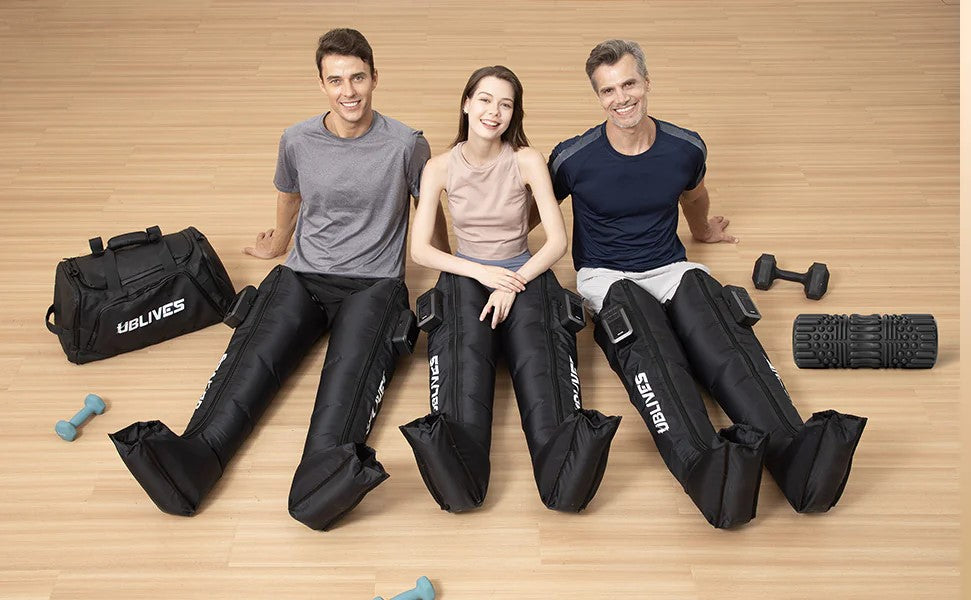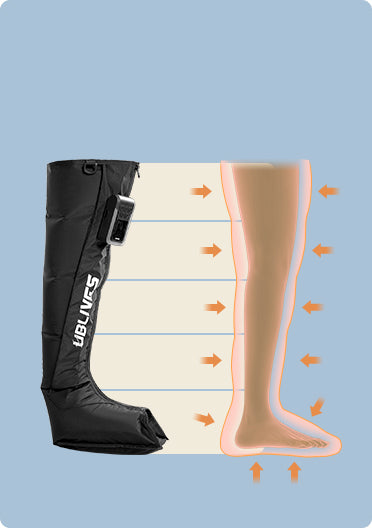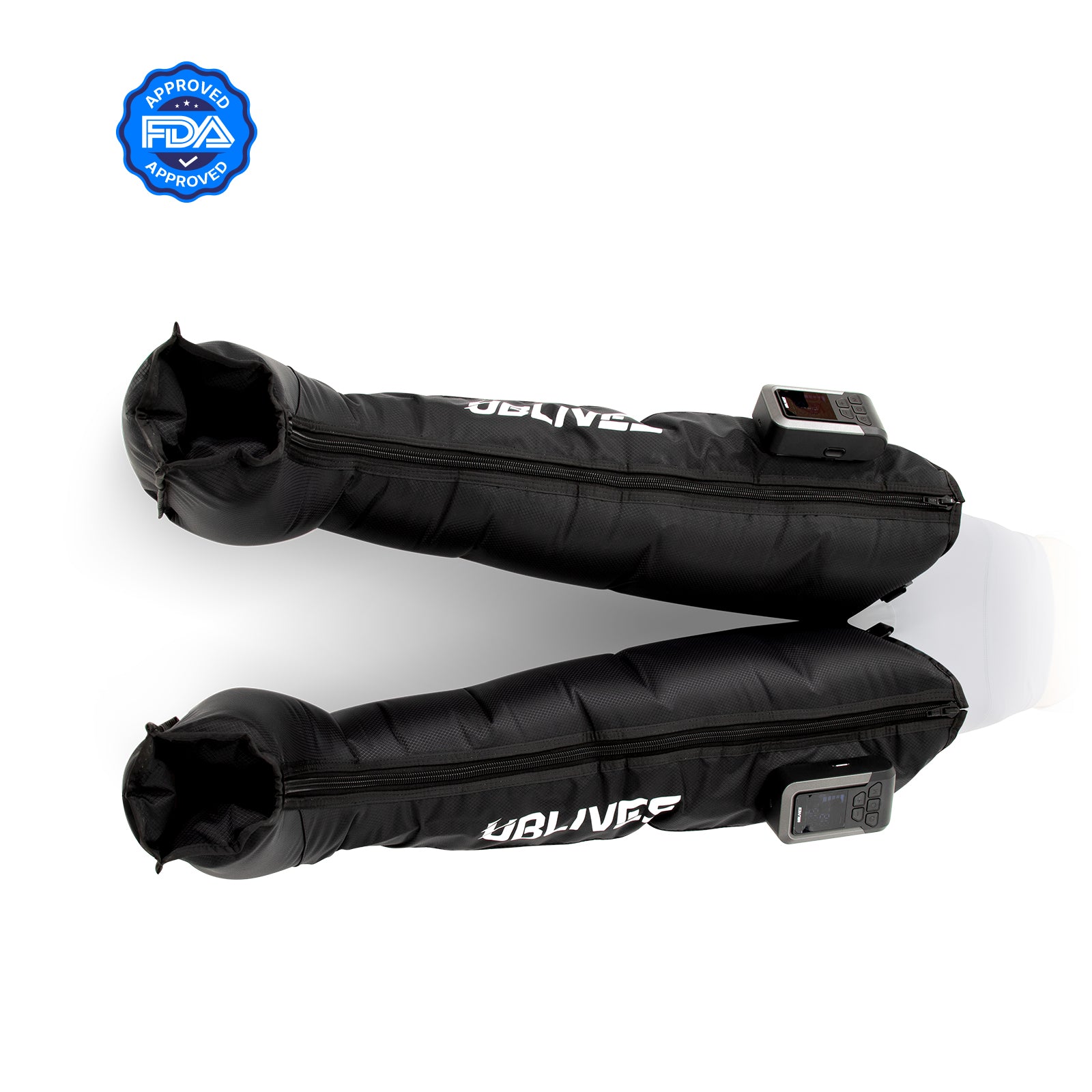
Can Leg Compression Help with Weight Loss and Body Shaping?
You might ask if leg compression helps with weight loss. The quick answer is no, it doesn’t burn fat. It also doesn’t shape your body directly. But it can help in your fitness journey. Compression clothing boosts blood flow and lowers swelling. It also helps muscles heal faster after workouts. These benefits can improve your exercise routine. This makes getting healthier easier. Knowing how it works helps you use it better.
How Does Compression Gear Work?
Compression gear gently squeezes certain parts of your body. This squeezing helps blood flow better, bringing oxygen and nutrients to muscles. Good blood flow also reduces swelling and soreness after exercise. You’ll notice this most in your legs if you wear compression socks or sleeves.
Compression gear also helps you recover faster. After exercising, your muscles might feel tight or swollen. Compression clothing reduces swelling by helping your body remove waste, like lactic acid. This makes recovery quicker, so you’re ready for your next workout sooner.
You can even use compression gear in daily life. For example, compression socks stop swelling if you sit or stand for a long time. Travelers also like them to avoid leg pain during flights.
In summary, compression gear supports muscles, boosts blood flow, and helps recovery. While it doesn’t burn fat, it makes staying active easier and more comfortable.

The Connection Between Compression Gear And Body Shaping: Shaping ≠ Weight Loss
Some people think compression products can change their shape or help them lose weight. This idea is common, but it’s not completely true. Compression gear can make your body look smoother for a short time. However, this change doesn’t last and doesn’t reduce fat.
Items like compression leggings or sleeves press on your skin and muscles. This pressure can make areas like your legs look thinner while wearing them. It works like shapewear. But once you take them off, your body goes back to normal. This shows that compression products don’t change your body’s makeup.
Shaping and losing weight are not the same thing. Shaping is about appearance, while weight loss means losing fat. Compression gear doesn’t burn fat or calories. Instead, it helps your muscles during workouts, making exercise easier. Over time, regular exercise and eating healthy bring real changes.
Tip: Use compression gear to help, not as a fix. It can improve workouts but won’t replace effort.
If you have loose skin after losing weight, compression products might help for a while. They can make your skin look tighter by holding it in place. But this is only a temporary look. For lasting results, focus on building muscle and staying healthy.
In summary, leg compression gear can help with shaping while worn, but it doesn’t cause lasting changes. Knowing this difference helps you set better goals and use these tools wisely.
How Compression Gear Works For Weight Loss And Loose Skin
Can Compression Gear Help With Weight Loss?
Compression gear, like socks or sleeves, doesn’t make you lose weight. It doesn’t burn fat or calories directly. Instead, it helps your body during exercise. By improving blood flow, it helps muscles work better. This can make workouts feel easier and less tiring. You might be able to exercise longer or more often.
When you stay active, you burn calories and build muscle. Over time, this can lead to weight loss. Compression gear helps by reducing soreness and speeding up recovery. This lets you stick to your fitness plan without long breaks.
If you want to lose weight, focus on exercise and eating healthy. Compression gear can help, but it won’t do the work for you.
Can Compression Gear Help With Loose Skin?
Loose skin can happen after losing a lot of weight. Compression gear can make it look tighter for a short time. For example, sleeves press on your skin, making it look smoother. But this effect only lasts while you wear them.
To fix loose skin for good, try building muscle. Strength training can fill areas where fat is lost. Drinking water and eating healthy foods also help your skin. Compression gear can boost confidence, but it’s not a permanent fix.
How Can You Avoid False Hopes Of “Quick Weight Loss”?
Quick weight loss tricks don’t usually work. Compression gear won’t burn fat or give instant results. Believing it will leave you upset. Instead, set goals that are realistic. Understand that losing weight takes time and effort.
Use compression gear as a helper, not a shortcut. It can make workouts easier and help you recover faster. Combine it with regular exercise and healthy eating. Celebrate small wins along the way. This keeps you motivated and focused on real progress.
Note: Stay away from products that promise fast weight loss. They often don’t work and could harm your health.
The Right Way To Lose Weight (Diet + Exercise)
Losing weight the healthy way needs two main steps: eating well and exercising. Eat foods like vegetables, lean meats, and whole grains. These give energy and help your body heal after workouts. Stay away from junk food and sugary drinks. They add calories but don’t help your body.
Exercise is key for burning calories and building strength. Try activities like jogging, biking, or lifting weights. Aim for 150 minutes of exercise each week. It’s better to stay consistent than to push too hard. Pick exercises you enjoy so you’ll keep doing them.
Compression products, like socks or sleeves, can help with workouts. They boost blood flow, which lowers tiredness in your muscles. This helps you work out longer and recover faster. After exercising, they reduce swelling and soreness by improving circulation. You’ll feel ready for your next session sooner.
To use compression products best, wear them during and after workouts. For example, runners can wear compression socks to keep their legs fresh. After running, keep them on to recover faster. Remember, these products don’t burn fat or replace hard work. They are tools to make exercise easier and more comfortable.
By eating healthy, staying active, and using compression products wisely, you can reach your weight loss goals step by step.

How Do You Get The Most From Compression Products?
To use compression products well, follow these simple tips:
Wear them during and after workouts: Put on compression gear while exercising. It helps your muscles and boosts blood flow. After workouts, it reduces swelling and helps you recover faster. For example, runners can wear compression socks while running and keep them on for an hour after.
Pick the right size: Compression gear should fit snugly, not too tight or loose. Loose gear won’t support you, and tight gear can block blood flow. Measure your legs or arms and check the size chart before buying.
Use them for the right activities: Different compression gear works for different tasks. Socks or sleeves are great for running, biking, or standing for long hours. Full-length tights are better for recovery after workouts.
Take care of them: Wash your compression gear often to keep it working well. Use cold water and gentle soap. Let them air dry instead of using a dryer, which can ruin the fabric.
Pair with healthy habits: Compression gear works best with good habits. Eat healthy food, exercise regularly, and drink plenty of water. These improve your fitness and make compression gear more helpful.
Tip: Listen to your body when using compression gear. If it feels too tight or causes numbness, adjust it or ask an expert.
By following these tips, you can make the most of compression products. They won’t do the work for you, but they can make staying fit easier and more comfortable.
How To Pick The Best Compression Gear For You?
Picking the right compression products depends on what you need them for. There are different types like socks, sleeves, tights, and suits. Each type helps with specific activities, so knowing your goal is important.
Know Your Goal
Think about why you need compression gear. Do you want to reduce muscle tiredness, recover faster, or stop swelling from standing too long? For running or biking, socks or calf sleeves are great. If you need full-leg support, try Ublives compression boots.
For recovery after hard workouts, choose "graduated compression" gear. These apply more pressure at the bottom and less at the top to improve blood flow.
Get the Right Size
The fit of the compression gear matters a lot. It should be snug but not too tight. Measure your arms or legs and check the size chart. Avoid gear that feels painful or too loose.
Check Material and Strength
Choose fabrics like spandex or nylon that let your skin breathe. These materials keep you dry and comfy during exercise. Strong stitching makes the gear last longer, even with regular use.
Read Reviews
Before buying, check what others say online. Reviews can tell you about comfort, quality, and how well the product works. This helps you choose wisely.
Start with one piece of compression gear to test it before buying more.
By choosing gear that fits your needs, you’ll get the most out of compression products and improve your fitness journey.
Conclusion
Compression gear helps you on your fitness journey, but be aware of its limitations. Use compression gear as an extra tool, not a primary solution. Wear it during your workout to lighten the load, and wear it after your workout for faster recovery.
However, these products will not directly burn fat or lose weight. Building muscle through strength exercises and a healthy diet is the best way to achieve long-term change. Use compression gear as part of a larger plan. Keep exercising, eat healthy, and trust the process. Over time, you'll see the results you want.
